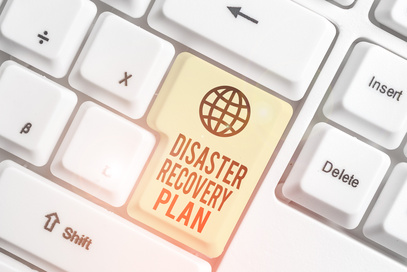Business Continuity and Disaster Recovery: Best Practices and Strategies
LEARNING OUTCOMES:
- Understanding the importance of BCDR planning and how it can protect an organization's assets, reputation, and bottom line
- Knowledge of the different types of disasters and disruptions that can occur, such as natural disasters, cyber-attacks, and power outages
- Understanding the different components of a BCDR plan, including risk assessment, business impact analysis, and incident response
- Knowledge of the various strategies and techniques that can be used to mitigate the impact of disruptions on business operations, such as backup and recovery, disaster recovery testing, and business continuity planning
- Understanding the key roles and responsibilities of individuals and teams involved in BCDR planning and response, including incident response teams, emergency management teams, and senior management
- Ability to develop and implement a BCDR plan for an organization.
- Knowledge of best practices, standards, and regulations related to BCDR, such as ISO 22301 and NIST SP 800-34
COURSE OVERVIEW & CONTENT:
"Preparation is the key to success in a disaster recovery scenario."
Business Continuity and Disaster Recovery (BCDR) training is designed to teach individuals how to plan for and respond to unexpected events that could disrupt business operations. The goal of BCDR training is to minimize the impact of disruptions on an organization and ensure that it can recover quickly after an incident.
BCDR training typically covers a wide range of topics, including risk assessment, incident response, and recovery procedures. It may also include information on different types of disasters that can occur (e.g. natural disasters, cyberattacks, power outages) and how they can impact a business.
Participants in BCDR training will learn how to develop and implement a business continuity plan for their organization. This may include identifying key business processes and critical assets, determining potential risks and threats, and creating procedures for responding to and recovering from a disaster.
In addition to learning how to create a business continuity plan, participants in BCDR training will also learn how to test and maintain the plan to ensure its effectiveness. This may include conducting regular drills and exercises, updating the plan as necessary, and reviewing it regularly to identify areas for improvement.
BCDR training may also include information on the importance of communication and coordination in the event of a disaster, as well as the role of different stakeholders (e.g. employees, customers, suppliers) in the recovery process. Participants will also learn about the regulatory and compliance requirements related to BCDR.
Overall, Business Continuity and Disaster Recovery training is designed to equip individuals with the knowledge and skills they need to minimize the impact of disruptions on their organization and ensure that it can recover quickly after an incident.
Introduction to Business Continuity and Disaster Recovery
- Definition and Purpose of Business Continuity and Disaster Recovery
- Importance of Having a Plan in Place
- Types Of Disasters and Disruptions That Can Occur
Business Impact Analysis
- Identifying Critical Business Functions and Their Dependencies
- Assessing the Potential Impact of Disruptions on Those Functions
- Determining Recovery Time Objectives and Recovery Point Objectives
Risk Assessment
- Identifying Potential Threats and Hazards
- Evaluating the Likelihood and Potential Impact of Those Threats and Hazards
- Prioritizing Risks and Determining a Course of Action
Disaster Recovery Planning
- Developing Procedures for Responding to and Recovering From Disruptions
- Identifying and Selecting Appropriate Recovery Solutions (E.G. Backup Systems, Cloud Services, Etc.)
- Testing and Maintaining the Disaster Recovery Plan
Business Continuity Planning
- Developing Procedures for Maintaining Business Operations During Disruptions
- Identifying and Implementing Measures to Minimize the Impact of Disruptions (E.G. Redundancy, Failover Systems, Etc.)
- Ensuring That Key Personnel are Trained and Aware of Their Roles in the Event of a Disruption
Incident Management and Communication
- Establishing Procedures for Responding to and Managing Disruptions
- Communicating With Stakeholders During and After a Disruption
- Coordinating With Local Authorities and Other Organizations As Necessary
Exercising and Reviewing the Plan
- Regularly Testing and Reviewing the Business Continuity and Disaster Recovery Plan
- Identifying and Addressing Any Gaps or Weaknesses in the Plan
- Incorporating Lessons Learned Into Future Planning and Training
Ongoing Maintenance and Improvement
- Regularly Reviewing and Updating the Business Continuity and Disaster Recovery Plan to Reflect Changes in the Organization and in the Threat Landscape
- Incorporating Feedback and Lessons Learned From Exercises And Disruptions Into The Plan
- Continuously Monitoring and Assessing the Effectiveness of the Plan and Making Necessary Adjustments
Conclusion
- Recap of the Importance of Business Continuity and Disaster Recovery Planning
- Encourage Participants to Implement What They Have Learned
- Provide Resources For Further Learning and Support
COURSE DURATION: FOUR DAYS
Testimonials
Special Offers
SPECIAL OFFER: Book today for Customer Care for Customers With Special Needs Programme and save 30% for in-house programme.
click hereSPECIAL OFFER: Book two places and get the third booking on the same course free of charge.

